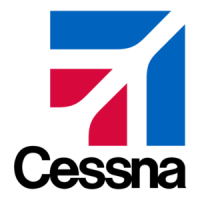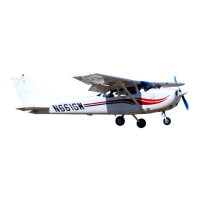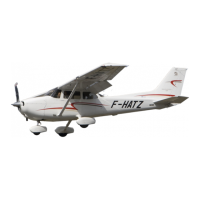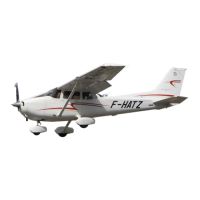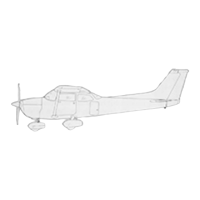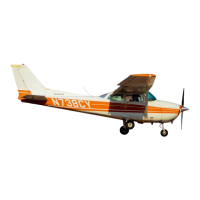CESSNA SECTION 8
MODEL 182T NAV
Ill HANDLING, SERVICE AND MAINTENANCE
GROUND HANDLING
(Continued)
To assist in raising and holding the nosewheel off the ground,
ground anchors should be utilized at the tail
tiedown point.
NOTE
Ensure that the nose will be held off the ground
under all conditions by means of suitable stands or
supports under weight supporting bulkheads near
the nose of the airplane.
LEVELING
Longitudinal leveling of the airplane is accomplished by placing a
level on leveling screws located on the left side of the tailcone.
Deflate the nose tire
andlor lower or raise the nose strut to properly
center the bubble in the level. Corresponding points on both upper
door sills may be used to level the airplane laterally.
FLYABLE STORAGE
Engines in airplanes that are flown every 30 days or less may not1
achieve normal service life because of internal corrosion. Corrosion
occurs when moisture from the air and the products of combustion
combine to attack cylinder walls and bearing surfaces during
periods when the airplane is not flown.
The minimum recommended operating frequency for the engine is
one continuous flight hour (not counting taxi, takeoff and landing
time) with oil temperatures of 165°F to 200°F every 30 days or less
(depending on location and storage conditions). Airplanes operated
close to oceans, lakes, rivers and in humid regions are in greater
need of engine preservation than airplanes operated in arid regions.
Appropriate engine preservation procedures must be practiced by
the owner or operator of the airplane based on present
environmental conditions and the frequency of airplane activity.
NOTE
The engine manufacturer does not recommend
pulling the engine through by hand during storage
periods.
(Continued Next Page)
U.S. 8-11

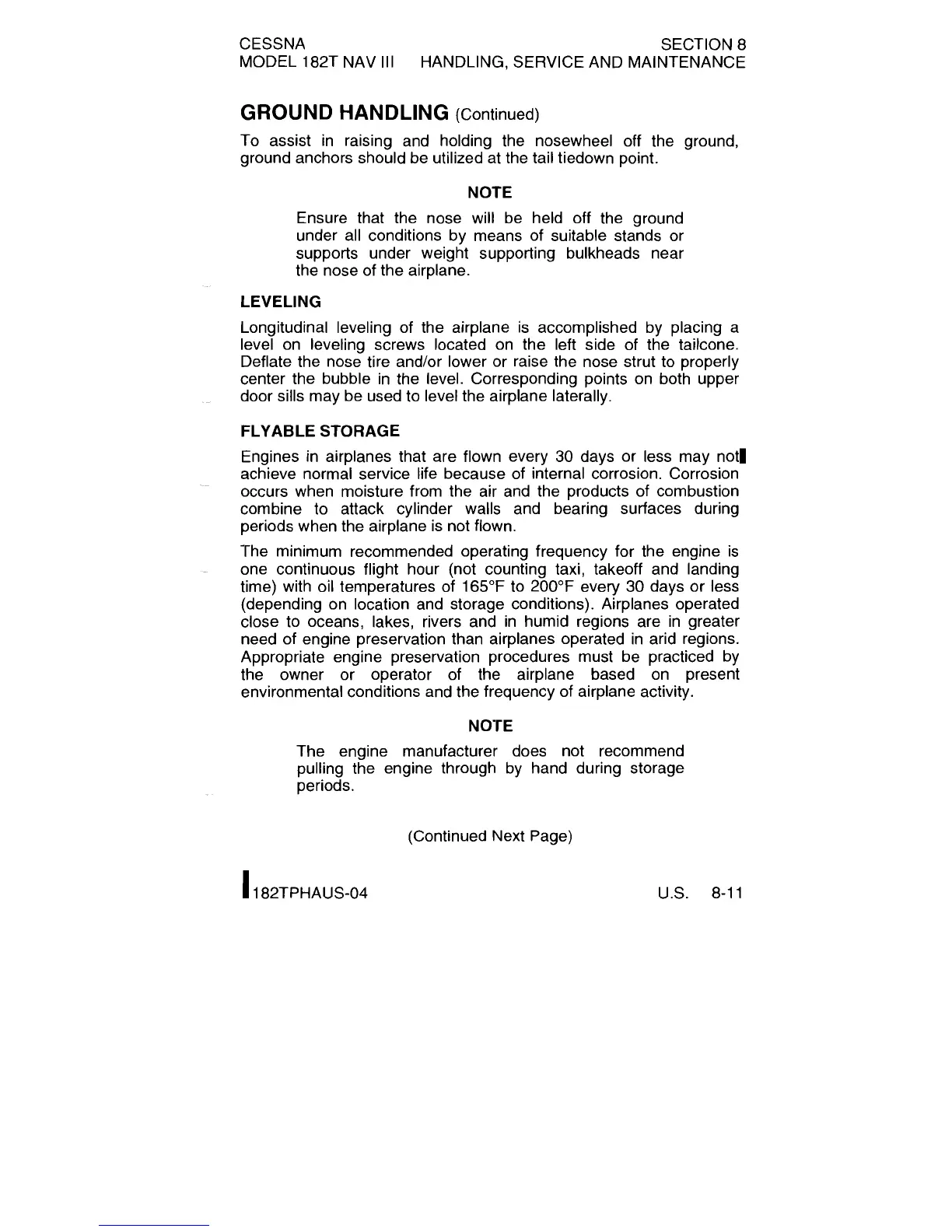